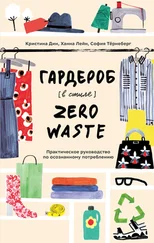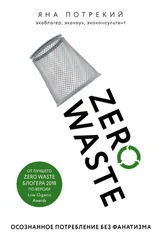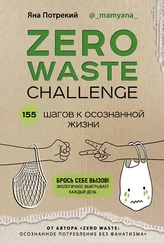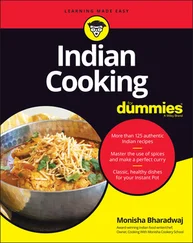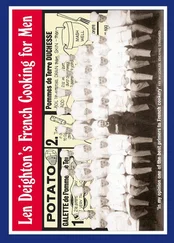From an ethical standpoint, livestock is raised for food by farmers and ranchers who know what they’re doing and raise and harvest animals in an ethical manner.
From an environmental standpoint, being a conscientious omnivore can lower your overall food waste, reducing what ends up in landfills.
A vegan, on the other hand, may feel differently, and that’s okay, too. It’s important to keep in mind that there are a few different agendas here: health, the environment, and animal welfare. This book focuses on reducing food waste in your kitchen, not the ethics of eating or not eating meat.
I cover more about agriculture and sustainability in Chapter 2, but to set the record straight: It’s your choice to be either an omnivore or an herbivore. In both cases, you can have a positive impact on your food budget and the environment when you waste less food (and switching to a zero waste kitchen may also improve your health).
Getting Started: How to Waste Less Food Today
You already have this book in hand, so you likely have already given some thought to your food waste habits. Perhaps you know what you waste but aren’t sure how to change. Or maybe you know you can do better but aren’t sure exactly how much you waste or where to start. No worries. This book meets you wherever you are in your food waste journey. Maybe the topic just sparked your interest, and you want to learn what zero waste cooking is all about. Or maybe you’re already on a food waste journey and need more inspiration and tips to keep going. This book is here for you. Peruse from chapter to chapter and feel free to dog-ear it up!
 This book isn’t going to guilt-trip you into literally wasting “zero” amounts of food or scraps. You don’t have to be a perfectionist. My hope is to send you upon a journey toward zero waste. Like the Tortoise, slow and steady wins the race. Every small amount of food diverted from landfills can help the environment — and certainly your pocketbook.
This book isn’t going to guilt-trip you into literally wasting “zero” amounts of food or scraps. You don’t have to be a perfectionist. My hope is to send you upon a journey toward zero waste. Like the Tortoise, slow and steady wins the race. Every small amount of food diverted from landfills can help the environment — and certainly your pocketbook.
Wherever you are on this journey, wasting less food starts with better understanding about what you throw away and why. For example, one of the reasons you may discard foods is reliance on best-by dates marked on packages. Those dates do relate to peak quality, but they’re not food safety indicators. So, yes, you can still eat many foods past the best-by dates. Find out more about this in Chapter 4.
Walk over to your kitchen trash bin and take a look.
Is it filled with vegetable peels and coffee grinds, or whole pieces of rotten fruit or leftover cooked food?
Do you fill a kitchen garbage bag more than once a week? Or every day?
Do you find that you habitually throw away certain food items due to expiration (produce, bread, dairy)?
Now peek inside your refrigerator.
Are you storing food optimally?
Are there containers shoved to the back?
Is there fruit or spinach rotting in a drawer?
What about your pantry or wherever you keep dry goods?
Are there boxes or cans that you’ve had a long time and haven’t used?
Are the foods dry, clean, and well-sealed? Are the packages in good physical condition?
Do you still stock snacks that are no longer your child’s favorites?
Do you have enough rice and ramen to feed an army?
Depending on your answers, you may need to focus your efforts in one or more of the following areas:
If your kitchen trash can is heavy with rotten bananas, Thursday’s uneaten leftovers, or moldy bread, then it’s time to coordinate a shopping list and meal plan and utilize your freezer. Head to Chapters 5, 6, and 7.
If you found long-forgotten take-out leftovers pushed to the back of your fridge, then it’s time to evaluate take-out orders or consider a weekly fridge check. Find related tips in Chapter 21.
If your produce drawer contains more slime than fruit, then an evaluation of storage habits is in order. Find storage guidelines in Chapter 5.If your household of two always ends up with a bag of 4 or 5 extra buns, consider individual buns from the bakery instead next time.
If you’ve stockpiled more cereal in your pantry than you can eat in a year, then it could be time to mark that item off your grocery list and walk away from those tempting end cap sales.
 A little planning goes a long way! Smart shopping, storage, and food prep not only reduces your food waste, but it saves you money and helps save our planet. Once you put some of the ideas in this book into practice, come back here and revisit these questions to see you far you’ve come.
A little planning goes a long way! Smart shopping, storage, and food prep not only reduces your food waste, but it saves you money and helps save our planet. Once you put some of the ideas in this book into practice, come back here and revisit these questions to see you far you’ve come.
Chapter 2
A Side of Sustainability: Putting Food and the Environment into Context
IN THIS CHAPTER
 Exploring food waste conservation across the food supply chain
Exploring food waste conservation across the food supply chain
 Discovering more about agriculture and where your food comes from
Discovering more about agriculture and where your food comes from
 Understanding food labels
Understanding food labels
You may be wondering, “Why do I need to learn about sustainability or what farmers and ranchers do in a zero waste cooking book?” Arming yourself with a little background about sustainability, food waste data, and how your food gets from a farmer’s field to your local market can help you understand your role to reduce food waste at home.
In this chapter, you find out about the food supply chain, the challenges that farmers and ranchers face, as well as some of the exciting technological advances of modern agriculture that make farming more efficient and eco-friendly, and bring more varieties of nutritious food to the table. This chapter also helps you understand how to interpret some of the hype and claims you often see on food packaging so you can skip the food fear and guild trip and avoid unnecessarily wasting the fruits of so many farmers’ labor.
Boiling It Down: Defining Sustainability
Sustainability is a broad term that’s important to just about every industry today, from businesses to technology to social and environmental sciences. According to Merriam-Webster, sustainable generally means “capable of being sustained.” In the case of sustainable farming, it’s defined as “of, relating to, or being a method of harvesting or using a resource so that the resource is not depleted or permanently damaged.”
The fact is, farmers have been thinking about sustainability for a long time. The dozens of farmers I’ve met all have a passion for caring for their land, wildlife, air, and water. They view sustainability as producing crops and livestock in an efficient way that preserves the environment while maintaining the well-being of their animals, land, families, and the community around them. This is done in part by using advanced specialized veterinary healthcare, genetic technology, and advanced nutrition for plant crops and animal production.
 If farmers from the past didn’t care for the soil and the land, there wouldn’t be arable land available today to grow crops on. Keep in mind that sustainability encompasses more than just the environment. It’s the intersection of environment, economics, and social responsibility. The work of bringing food to your table isn’t sustainable if it isn’t also economically viable.
If farmers from the past didn’t care for the soil and the land, there wouldn’t be arable land available today to grow crops on. Keep in mind that sustainability encompasses more than just the environment. It’s the intersection of environment, economics, and social responsibility. The work of bringing food to your table isn’t sustainable if it isn’t also economically viable.
Читать дальше

 This book isn’t going to guilt-trip you into literally wasting “zero” amounts of food or scraps. You don’t have to be a perfectionist. My hope is to send you upon a journey toward zero waste. Like the Tortoise, slow and steady wins the race. Every small amount of food diverted from landfills can help the environment — and certainly your pocketbook.
This book isn’t going to guilt-trip you into literally wasting “zero” amounts of food or scraps. You don’t have to be a perfectionist. My hope is to send you upon a journey toward zero waste. Like the Tortoise, slow and steady wins the race. Every small amount of food diverted from landfills can help the environment — and certainly your pocketbook. Exploring food waste conservation across the food supply chain
Exploring food waste conservation across the food supply chain